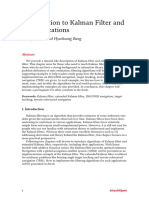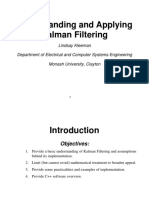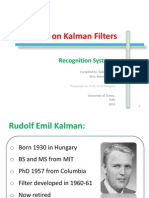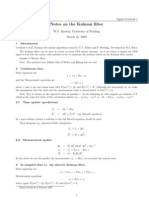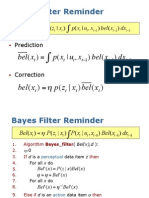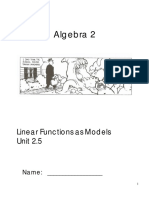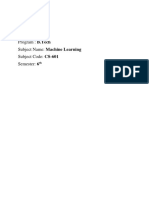0% found this document useful (0 votes)
74 views19 pagesKalman's Beautiful Filter: (An Introduction)
The document provides an introduction to the Kalman filter. It discusses that the Kalman filter provides the best estimate of the state vector x given a linear dynamical system with process and measurement noise. It works recursively by making a prediction and then correcting the prediction using the measurement. The correction is calculated by finding the change in estimate Δx that minimizes the distance between the prediction and the measurement based on their uncertainties. The Kalman filter also estimates the covariance of the estimate to provide a distribution rather than just a single value.
Uploaded by
MMCopyright
© © All Rights Reserved
We take content rights seriously. If you suspect this is your content, claim it here.
Available Formats
Download as PPT, PDF, TXT or read online on Scribd
0% found this document useful (0 votes)
74 views19 pagesKalman's Beautiful Filter: (An Introduction)
The document provides an introduction to the Kalman filter. It discusses that the Kalman filter provides the best estimate of the state vector x given a linear dynamical system with process and measurement noise. It works recursively by making a prediction and then correcting the prediction using the measurement. The correction is calculated by finding the change in estimate Δx that minimizes the distance between the prediction and the measurement based on their uncertainties. The Kalman filter also estimates the covariance of the estimate to provide a distribution rather than just a single value.
Uploaded by
MMCopyright
© © All Rights Reserved
We take content rights seriously. If you suspect this is your content, claim it here.
Available Formats
Download as PPT, PDF, TXT or read online on Scribd
/ 19














